
The Blue Jewel of Rajasthan
Discover Jodhpur, the Blue City of Rajasthan, where vibrant blue houses, majestic forts, bustling markets, and royal palaces offer a unique and colorful travel experience.
Jodhpur, known as the Blue City, is a captivating destination in the heart of Rajasthan, India. The city's vivid blue houses, which are believed to keep the homes cool and repel insects, create a mesmerizing sea of color that contrasts beautifully with the golden sands of the Thar Desert. The city’s skyline is dominated by the majestic Mehrangarh Fort, a massive 15th-century fortress that offers panoramic views of the city and the surrounding desert. Inside the fort, visitors can explore palatial rooms adorned with intricate carvings and vibrant frescoes, as well as a museum housing artifacts from Jodhpur’s royal past. The old city, enclosed by a thick stone wall with several gates, is a labyrinth of narrow streets bustling with life. Here, you can immerse yourself in the local culture by visiting bustling markets full of spices, textiles, and handicrafts. The Clock Tower and the nearby Sardar Market are particularly popular spots, where the aroma of spices and the vibrant colors of textiles and handicrafts will stimulate your senses. Don’t miss the chance to taste the local cuisine, which includes delicious treats like mirchi vada and mawa kachori. Beyond the historical and cultural attractions, Jodhpur also offers serene moments of tranquility. The peaceful Mandore Gardens, with its cenotaphs and temples, and the beautiful Umaid Bhawan Palace, one of the world’s largest private residences, provide a glimpse into the city's regal history and architectural splendor. The palace, part of which is now a luxury hotel, also houses a museum showcasing royal artifacts. The city’s blend of history, culture, and color makes Jodhpur a must-visit destination for any traveler exploring Rajasthan.
Local tips in Jodhpur
- Visit Mehrangarh Fort early in the morning to avoid the crowds and enjoy the cool weather.
- Wear comfortable shoes for exploring the narrow streets of the old city.
- Try the local delicacies like mirchi vada and mawa kachori at Sardar Market.
- Hire a local guide for a more insightful tour of the city's historical sites.
- Stay at a heritage hotel to experience the royal hospitality of Rajasthan.
The Blue Jewel of Rajasthan
Jodhpur, known as the Blue City, is a captivating destination in the heart of Rajasthan, India. The city's vivid blue houses, which are believed to keep the homes cool and repel insects, create a mesmerizing sea of color that contrasts beautifully with the golden sands of the Thar Desert. The city’s skyline is dominated by the majestic Mehrangarh Fort, a massive 15th-century fortress that offers panoramic views of the city and the surrounding desert. Inside the fort, visitors can explore palatial rooms adorned with intricate carvings and vibrant frescoes, as well as a museum housing artifacts from Jodhpur’s royal past. The old city, enclosed by a thick stone wall with several gates, is a labyrinth of narrow streets bustling with life. Here, you can immerse yourself in the local culture by visiting bustling markets full of spices, textiles, and handicrafts. The Clock Tower and the nearby Sardar Market are particularly popular spots, where the aroma of spices and the vibrant colors of textiles and handicrafts will stimulate your senses. Don’t miss the chance to taste the local cuisine, which includes delicious treats like mirchi vada and mawa kachori. Beyond the historical and cultural attractions, Jodhpur also offers serene moments of tranquility. The peaceful Mandore Gardens, with its cenotaphs and temples, and the beautiful Umaid Bhawan Palace, one of the world’s largest private residences, provide a glimpse into the city's regal history and architectural splendor. The palace, part of which is now a luxury hotel, also houses a museum showcasing royal artifacts. The city’s blend of history, culture, and color makes Jodhpur a must-visit destination for any traveler exploring Rajasthan.
When is the best time to go to Jodhpur?
Iconic landmarks you can’t miss
Mehrangarh Fort
Experience the grandeur of Mehrangarh Fort, a historical landmark in Jodhpur, rich in culture, history, and breathtaking views.

Umaid Bhawan Palace
Discover the majestic Umaid Bhawan Palace in Jodhpur, a luxurious heritage hotel offering a blend of history, stunning architecture, and royal hospitality.

Ghanta Ghar Jodhpur
Discover the charm of Jodhpur at the Ghanta Ghar, a historical clock tower surrounded by vibrant markets and stunning views of the Blue City.
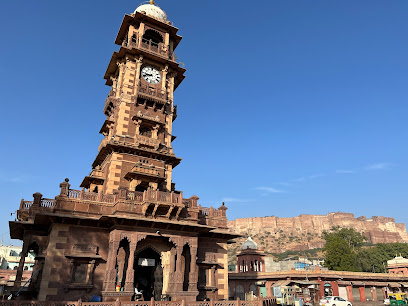
Mandore Garden
Experience the serene beauty and rich history of Mandore Garden, a hidden gem in Jodhpur that combines nature and culture.

Umaid Bhawan Museum
Explore the Umaid Bhawan Museum, a heritage treasure in Jodhpur showcasing royal history and architectural splendor amidst stunning gardens.
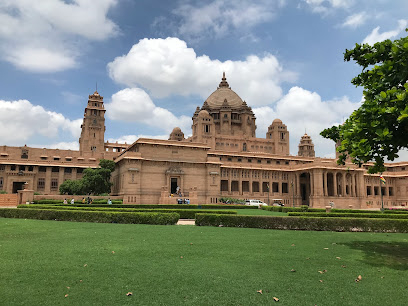
Jaswant Thada
Discover the architectural beauty and serene gardens of Jaswant Thada, a royal cenotaph in Jodhpur that offers a peaceful escape and stunning views.

Nehru Park
Explore Nehru Park: A lush, tranquil retreat in Jodhpur, perfect for relaxation, picnics, and cultural experiences amidst nature's beauty.
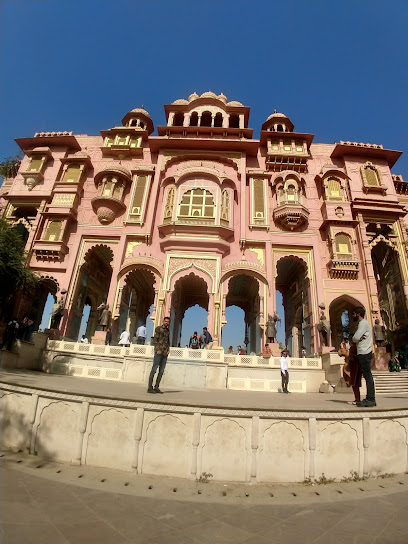
Toorji Ka Jhalra Bavdi
Discover the architectural beauty and historical significance of Toorji Ka Jhalra Bavdi, a captivating stepwell in the heart of Jodhpur.
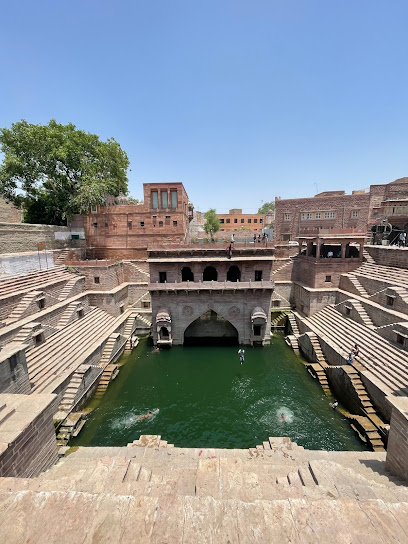
Rao Jodha Desert Rock Park
Discover the natural beauty and biodiversity of Rao Jodha Desert Rock Park in Jodhpur, a serene escape into Rajasthan's desert landscape.
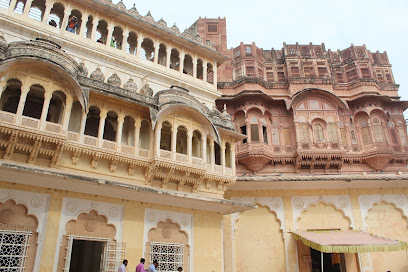
Masuriya Hill Garden (veer durgadas ji Garden)
Discover the tranquil beauty of Masuriya Hill Garden in Jodhpur, a perfect retreat for nature lovers and families seeking relaxation in Rajasthan.
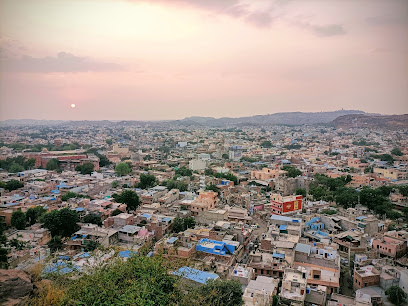
Ummed Garden
Discover the tranquility of Ummed Garden in Jodhpur, a stunning park with vibrant flowers and serene landscapes perfect for relaxation and exploration.
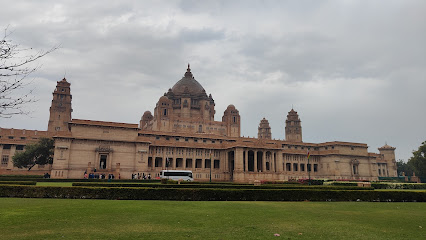
Masuria Hills
Discover tranquility and breathtaking views at Masuria Hills, a serene tourist attraction in Jodhpur, Rajasthan, perfect for nature lovers and explorers.

SOJATI GATE
Discover the historical charm of Sojati Gate, a majestic landmark in Jodhpur that showcases Rajasthan's rich cultural heritage.
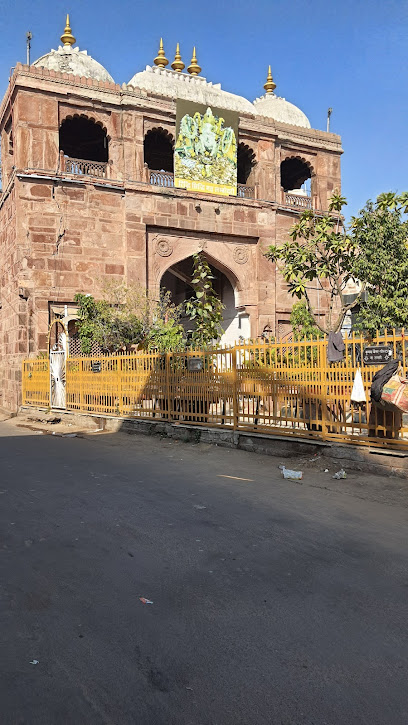
Flying Fox Jodhpur
Experience the thrill of ziplining over Jodhpur's majestic landscapes, soaring high above historical sites for a unique aerial adventure.
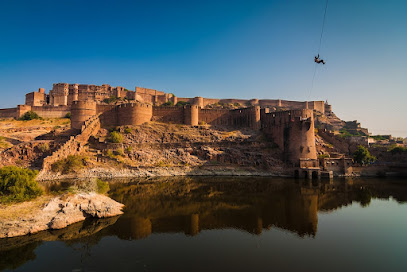
Kunj Bihari Temple
Discover the serene beauty and spiritual essence of Kunj Bihari Temple, a must-visit Hindu temple in the vibrant city of Jodhpur, Rajasthan.
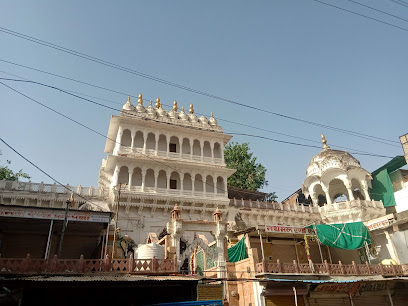
Unmissable attractions to see
Mehrangarh Fort
Discover the stunning architecture and rich history of Mehrangarh Fort, a must-see landmark in Jodhpur, Rajasthan, known for its breathtaking views and cultural significance.
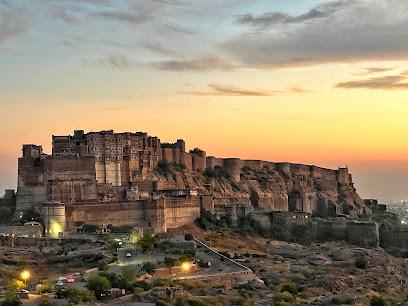
Umaid Bhawan Palace
Discover the majestic Umaid Bhawan Palace, a luxurious heritage hotel in Jodhpur, Rajasthan, blending history with modern opulence.

Umaid Bhawan Palace
Experience the royal legacy at Umaid Bhawan Palace, a luxurious heritage hotel in Jodhpur, Rajasthan, blending history with modern comfort.

Ghanta Ghar Jodhpur
Discover the iconic Ghanta Ghar in Jodhpur, a blend of history, culture, and vibrant local life in the heart of Rajasthan.
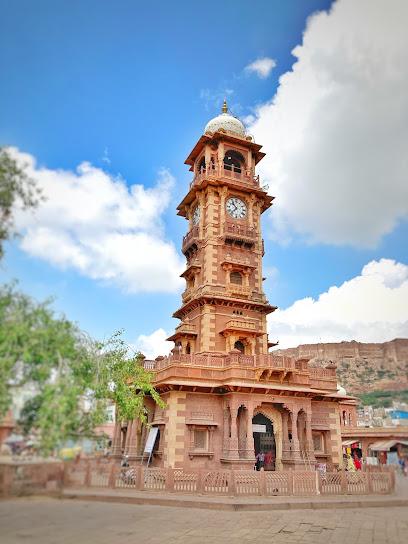
Om Banna Temple
Explore the captivating Om Banna Temple in Rajasthan, where spirituality meets local folklore in a vibrant cultural setting.
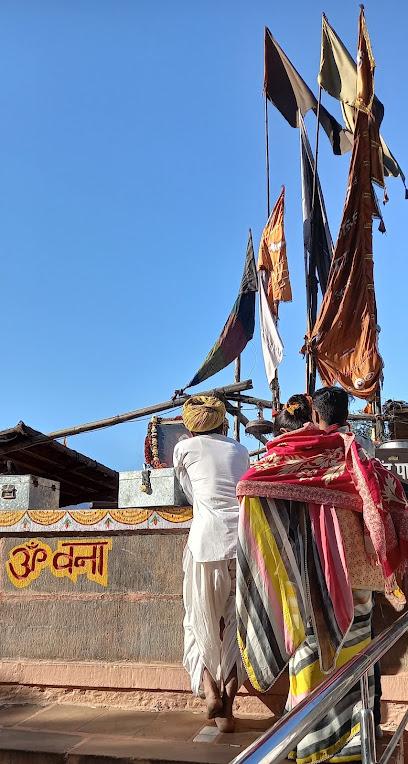
Umaid Bhawan Museum
Explore the majestic Umaid Bhawan Museum in Jodhpur, where royal heritage and rich history come alive through exquisite artifacts and stunning architecture.
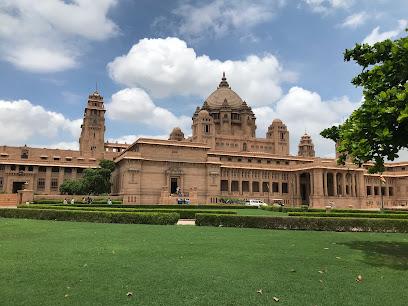
Toorji Ka Jhalra Bavdi
Discover the architectural beauty and rich history of Toorji Ka Jhalra Bavdi, a stunning historical landmark in Jodhpur, Rajasthan.
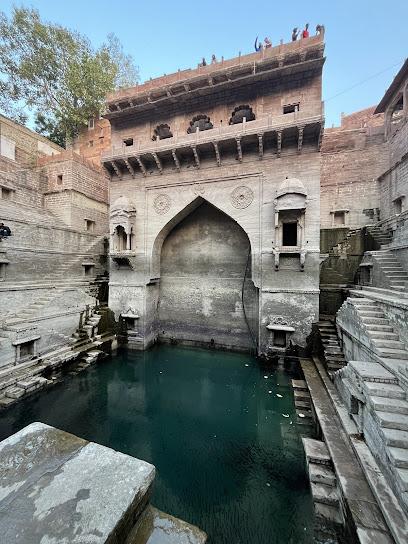
Nehru Park
Discover the tranquility of Nehru Park, a lush green haven in Jodhpur, perfect for relaxation, family outings, and enjoying nature's beauty.
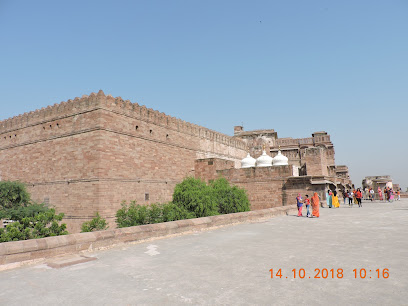
Machia Biological Park, Jodhpur
Explore the natural beauty and diverse wildlife at Machia Biological Park, a serene escape near Kaylana Lake in Jodhpur, Rajasthan.
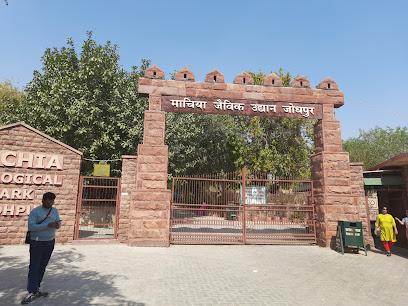
Shree Pal Balaji Temple
Explore the spiritual haven of Shree Pal Balaji Temple in Jodhpur, a stunning Hindu temple blending rich culture and divine serenity.
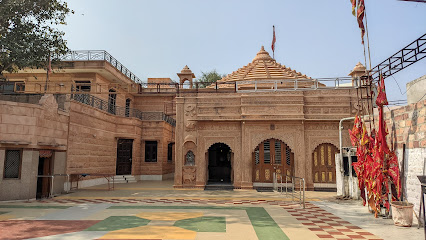
Ganesh Temple Ratanada
Experience the spiritual serenity of Ganesh Temple Ratanada, a breathtaking Hindu temple in Rajasthan, dedicated to the beloved deity Lord Ganesh.
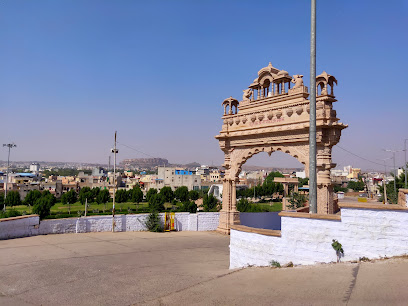
Rao Jodha Desert Rock Park
Discover the ecological and historical wonders of Rao Jodha Desert Rock Park, a serene escape at the foot of Mehrangarh Fort in Jodhpur, Rajasthan.
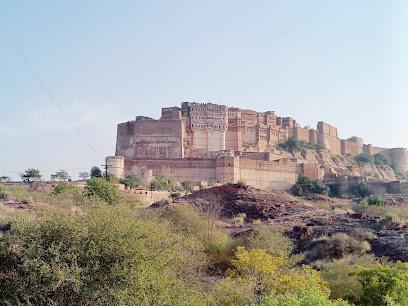
Bheru Bagh Parshvnath Jain Shvetamber Teerth
Discover the spiritual beauty and architectural grandeur of Bheru Bagh Parshvnath Jain Shvetamber Teerth in Jodhpur, a must-visit destination for peace seekers.
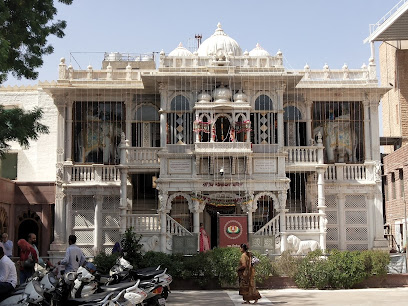
Masuriya Hill Garden (veer durgadas ji Garden)
Explore the serene Masuriya Hill Garden in Jodhpur, a stunning oasis with vibrant flora and breathtaking views, perfect for relaxation and exploration.
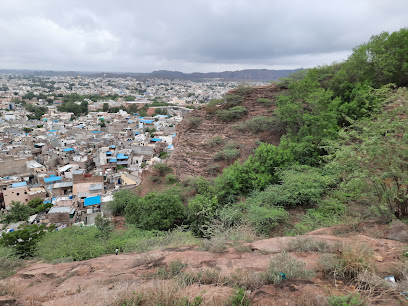
Children's Park
Discover the vibrant Children's Park in Jodhpur, a family-friendly oasis filled with play areas, greenery, and community spirit, perfect for all ages.
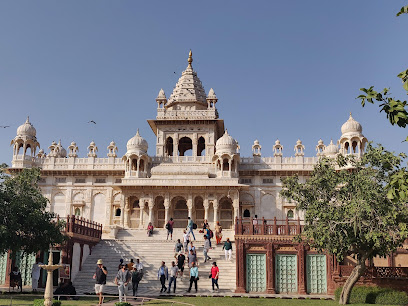
Essential places to dine
Gypsy Vegetarian Restaurant
Experience the vibrant flavors of vegetarian cuisine at Gypsy Vegetarian Restaurant in Jodhpur - a true delight for food lovers.
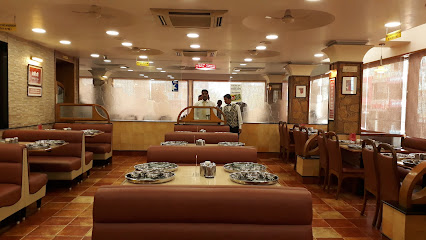
On The Rocks
Experience the best of Asian Fusion cuisine at On The Rocks in Jodhpur - where flavor meets elegance.
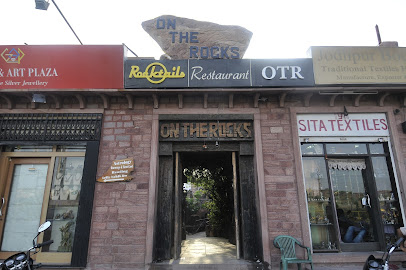
Fun N Food - Pure Veg. Family Restaurant
Discover the flavors of Rajasthan at Fun N Food - Pure Veg. Family Restaurant, where delicious vegetarian cuisine meets family-friendly dining.
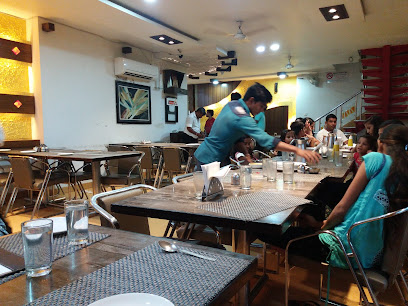
Kalinga Restaurant
Discover authentic North Indian cuisine at Kalinga Restaurant in Jodhpur – where every meal is a flavorful journey.

The Plant Story- Best Family Restaurant & Cafe
Discover the best vegetarian cuisine at The Plant Story – where delicious flavors meet a serene atmosphere in Jodhpur.
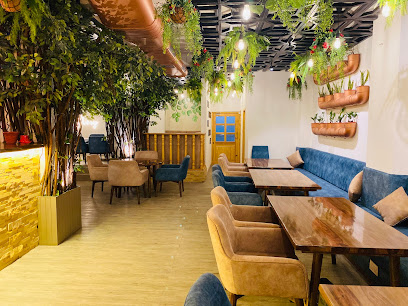
Sankalp Restaurant
Discover the rich flavors of South India at Sankalp Restaurant in Jodhpur – A vegetarian paradise serving delightful dishes.
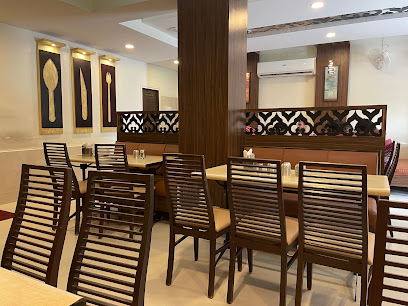
Crossroads
Experience a world of flavors at Crossroads, where culinary traditions meet modern fusion in the heart of Jodhpur.
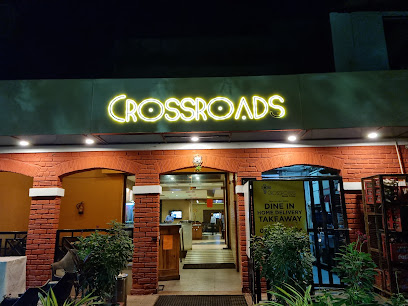
The Spice Route Restaurant
Experience the rich culinary heritage at The Spice Route Restaurant in Jodhpur – where Rajasthani spices meet exquisite Chinese flavors.
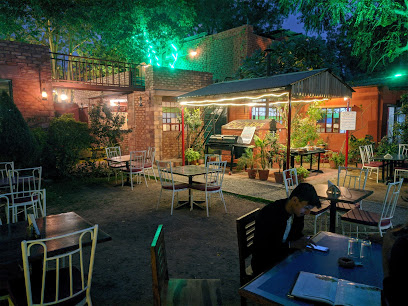
Indique Restaurant & Bar
Experience the rich flavors of India at Indique Restaurant & Bar in Jodhpur - where culinary tradition meets breathtaking views.
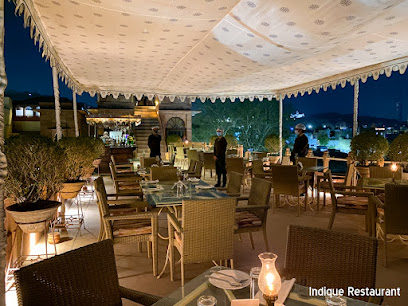
JHANKAR HAVELI
Experience traditional Rajasthani hospitality at Jhankar Haveli – where comfort meets culture in the heart of Jodhpur.
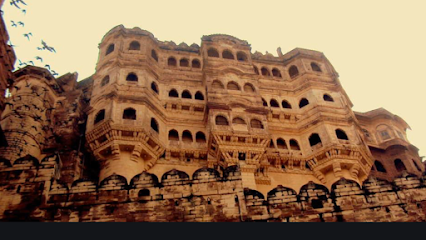
Winds Restaurant
Discover the essence of Indian cuisine at Winds Restaurant in Jodhpur – where traditional flavors meet modern dining.
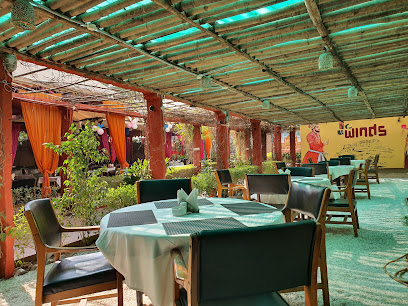
Skyzz
Discover exquisite vegetarian cuisine at Skyzz in Jodhpur's Blue City Mall, where tradition meets modernity amidst stunning views.
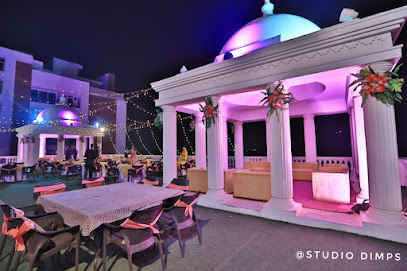
Tamarind Restaurant Jodhpur
Discover Tamarind Restaurant in Jodhpur - A Vegetarian Delight Offering Authentic Indian Cuisine in a Warm Ambiance.
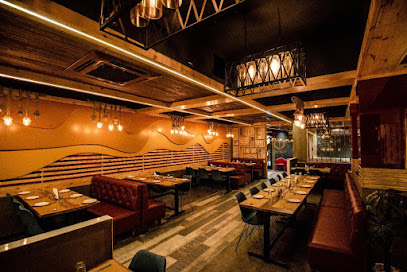
Hola Skylounge and Kitchen
Discover the vibrant flavors of India at Hola Skylounge and Kitchen – where every meal is a celebration.

Gopal Roof Top Restaurant ( Rajsthani Cuisine & Lal Maas )
Experience authentic Rajasthani cuisine with stunning views at Gopal Roof Top Restaurant in Jodhpur.
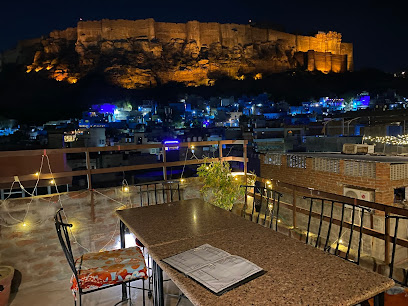
Markets, malls and hidden boutiques
Firstcry.com Store Jodhpur Circuit House
Shop the best baby products at Firstcry.com Store in Jodhpur, where quality meets convenience for every parent.
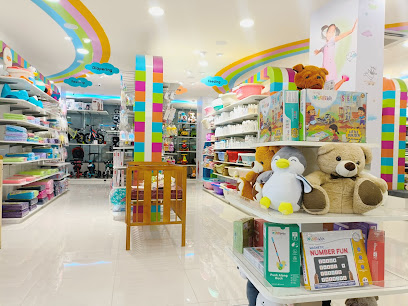
Firstcry.com Store Jodhpur Sardarpura
Explore a family-friendly shopping experience at Firstcry.com Store in Jodhpur Sardarpura, offering a wide range of baby and maternity products.
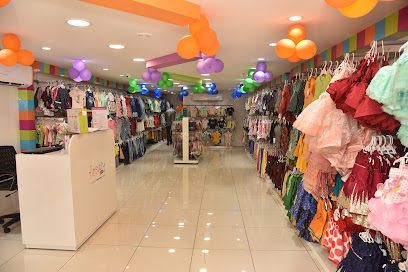
Saturday Shopee
Explore Saturday Shopee in Jodhpur for a diverse selection of clothing for the entire family, from trendy casuals to elegant formal wear.
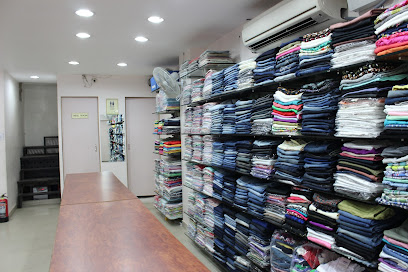
Iconic Fashion Jodhpur
Discover the vibrant world of designer clothing at Iconic Fashion Jodhpur, where tradition meets contemporary style in every exquisite piece.
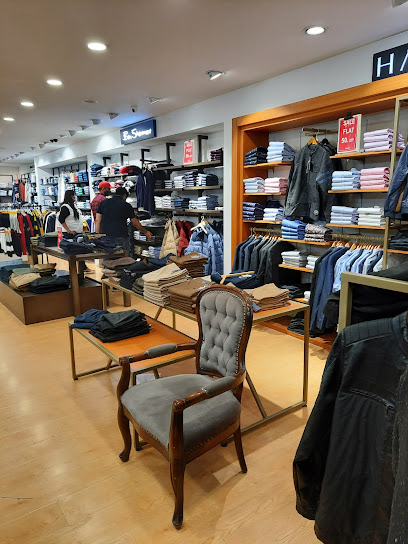
Jodhpur Departmental Store
Explore Jodhpur Departmental Store, your go-to place for local crafts, essentials, and unique souvenirs in the heart of Rajasthan's vibrant culture.

Unique Dressup
Explore Unique Dressup in Jodhpur for a blend of contemporary and traditional fashion, showcasing vibrant clothing and exquisite craftsmanship.
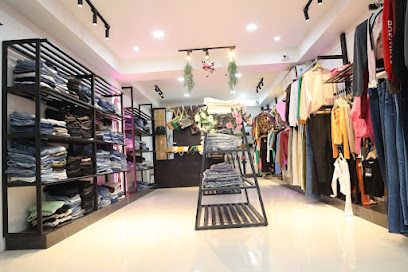
Ankur Boutique
Discover exquisite bridal wear and designer clothing at Ankur Boutique in Jodhpur, where tradition and modern elegance meet in stunning fashion.
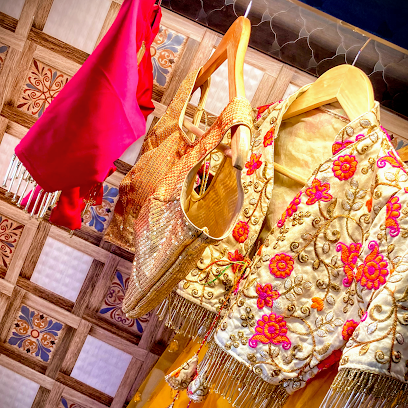
Riwaz Boutique Jodhpur
Explore Riwaz Boutique in Jodhpur for unique designer women's fashion that embodies the cultural richness of Rajasthan.
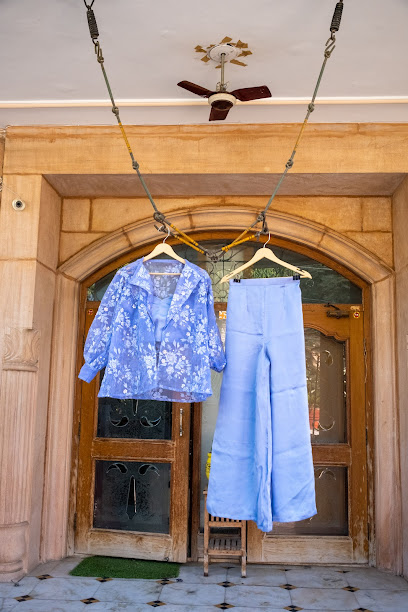
1 Stop Store | Family Clothing & Footwear Store in Jodhpur
Explore Jodhpur's vibrant family clothing and footwear selection at 1 Stop Store, a must-visit shopping destination for tourists.
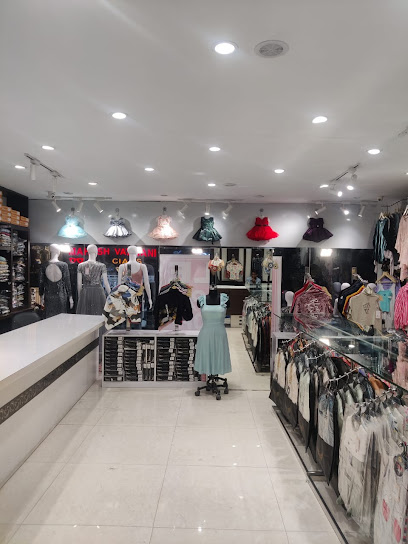
Baba Art Emporium
Explore the vibrant handicrafts of Rajasthan at Baba Art Emporium, where local artistry meets unique treasures.
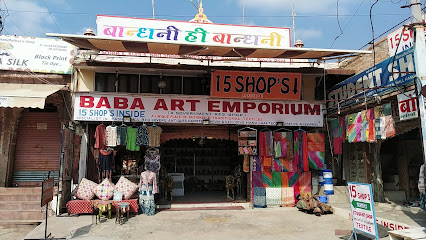
UNIQUE Men's Wear
Explore Unique Men's Wear in Jodhpur for stylish, high-quality clothing that combines traditional craftsmanship with modern flair.
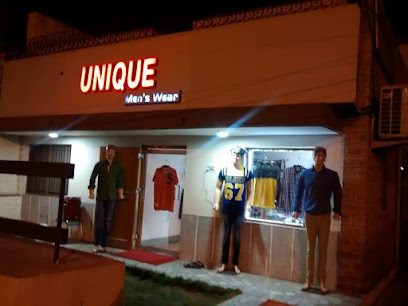
Good Earth - Moon House Haveli
Explore the vibrant gifts and unique handcrafted treasures at Good Earth - Moon House Haveli in Jodhpur, a true reflection of Rajasthan's artistry.
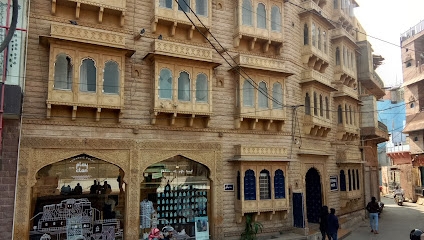
Uttam Personalized Gifts
Explore Uttam Personalized Gifts in Jodhpur for unique, custom souvenirs and corporate gifts that reflect the vibrant culture of Rajasthan.
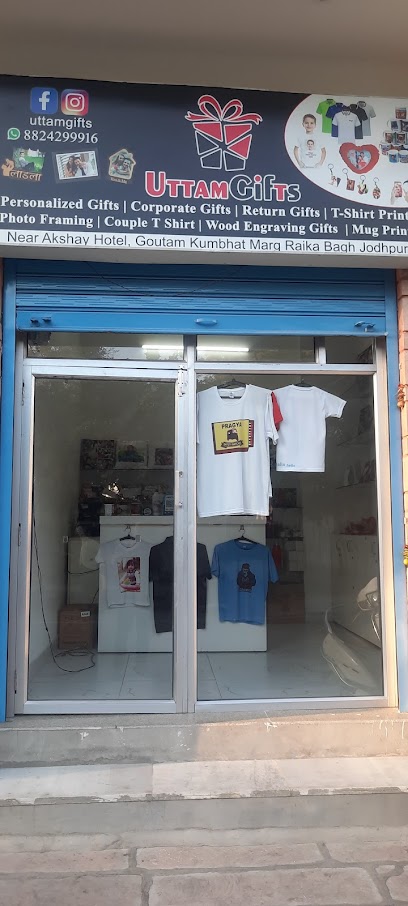
Wholesale Gift Shop
Explore Jodhpur's Wholesale Gift Shop for an unforgettable shopping experience filled with unique handcrafted gifts and local treasures.
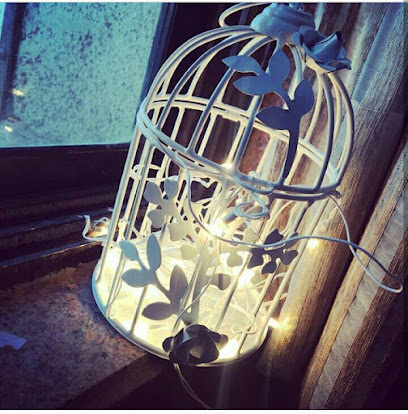
rakhi shop(a)ugust
Discover vibrant Rakhis and local handicrafts at Rakhi Shop in Sardarpura, Jodhpur - a treasure trove of traditional Indian gifts.
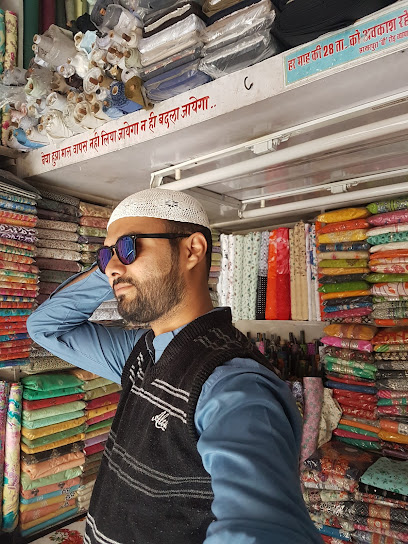
Essential bars & hidden hideouts
Banera The Lounge And Bar
Discover the vibrant flavors of Rajasthan at Banera The Lounge And Bar, where exquisite grills meet a lively atmosphere in the heart of Jodhpur.
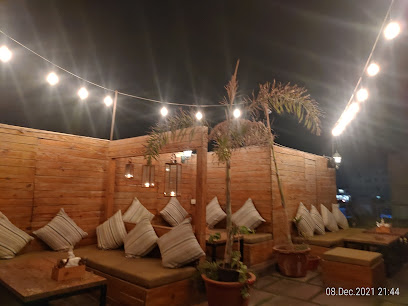
Four Brothers Brewing - Restrobar & Club
Experience the perfect blend of craft beers, delicious cuisine, and vibrant nightlife at Four Brothers Brewing in Jodhpur.
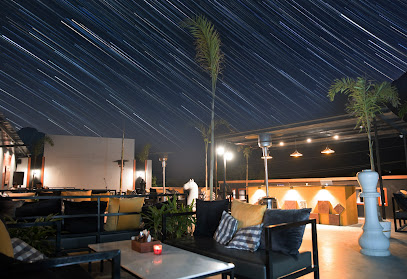
Pulse The Bar
Discover Pulse The Bar in Jodhpur, a vibrant and inviting vegetarian restaurant and bar with a diverse menu and lively atmosphere.

The Men Cave
Experience the perfect blend of modern dining and traditional Rajasthani flavors at The Men Cave in Jodhpur.
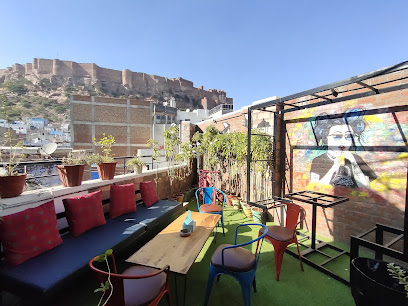
Monarch Bar
Discover the vibrant nightlife at Monarch Bar in Jodhpur, where charming ambiance meets an extensive drink selection.
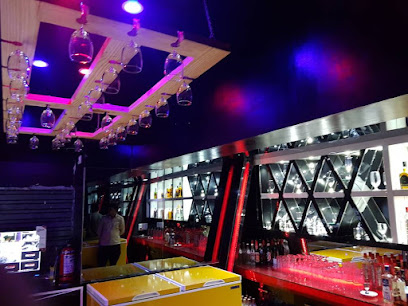
Darbar Bar
Experience the elegance of Darbar Bar in Jodhpur, where exquisite wines and cocktails meet a vibrant atmosphere.
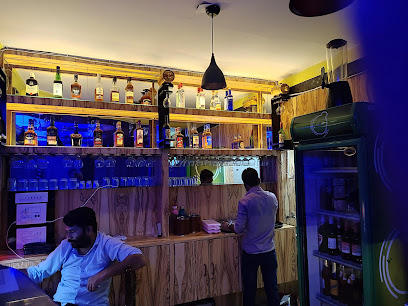
The Agni rooftop lounge, bar, resto.
Discover the perfect blend of enchanting views, lively atmosphere, and exquisite cuisine at The Agni Rooftop Lounge in Jodhpur.
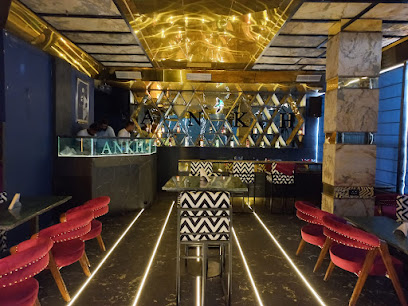
The Beer Cafe
Discover the lively atmosphere of The Beer Cafe in Jodhpur, where local and international beers meet delicious bites in a vibrant setting.

Z Bar - Zone by The Park, Jodhpur
Experience the vibrant nightlife and exquisite culinary offerings at Z Bar, Zone by The Park, the ultimate destination for relaxation in Jodhpur.
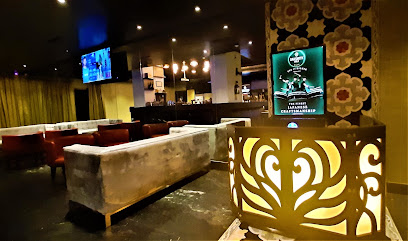
kubes jodhpur
Experience a fusion of flavors at Kubes Jodhpur, where fine dining meets local culture in a stunning ambiance.
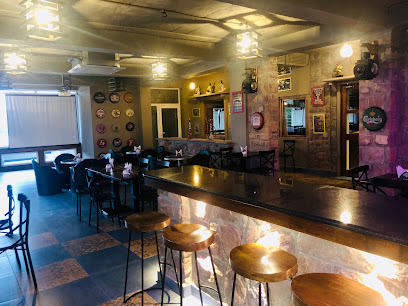
GEOFFREY'S- THE PUB
Discover the vibrant atmosphere at Geoffrey's - The Pub in Jodhpur, offering great drinks, delicious food, and an energetic social scene.
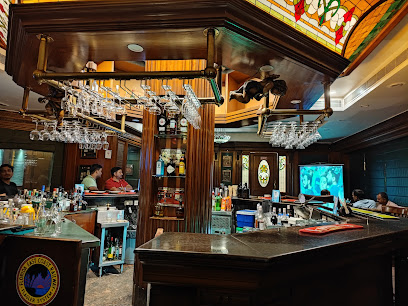
Lily's Bar And Restaurant
Discover the Best of Indian and International Cuisine at Lily's Bar And Restaurant in Jodhpur - A Culinary Delight for Every Traveler.
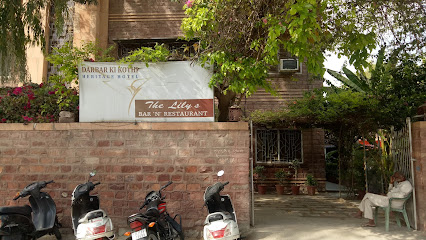
Patio by Bottoms Up
Discover the lively ambiance and exquisite drinks at Patio by Bottoms Up, one of Jodhpur's top bars, perfect for unwinding after a day of exploration.
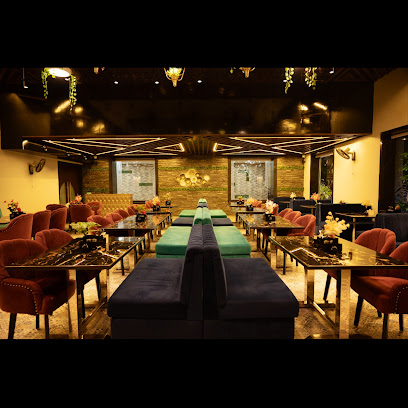
The Bar
Discover the elegance of The Bar at Taj Hari Mahal in Jodhpur, where exquisite cocktails meet luxurious ambiance for an unforgettable experience.
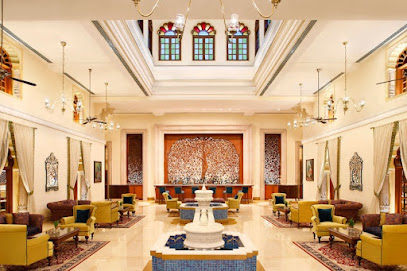
Black & White Bar
Discover the lively ambiance and diverse drink selection at Black & White Bar, a vibrant hotspot in Jodhpur offering a memorable nightlife experience.

Local Phrases
-
- Helloनमस्ते
[namaste] - Goodbyeअलविदा
[alvida] - Yesहाँ
[haan] - Noनहीं
[nahi] - Please/You're welcomeकृपया
[krupaya] - Thank youधन्यवाद
[dhanyavad] - Excuse me/Sorryमाफ़ कीजिए
[maaf kijiye] - How are you?आप कैसे हैं?
[aap kaise hain?] - Fine. And you?ठीक हूँ। और आप?
[thik hoon. aur aap?] - Do you speak English?क्या आप अंग्रेज़ी बोलते हैं?
[kya aap angrezi bolte hain?] - I don't understandमुझे समझ नहीं आया
[mujhe samajh nahi aaya]
- Helloनमस्ते
-
- I'd like to see the menu, pleaseकृपया मेन्यू दिखाएं
[krupaya menu dikhaye] - I don't eat meatमैं मांस नहीं खाता/खाती
[main maans nahi khaata/khaati] - Cheers!चियर्स!
[cheers!] - I would like to pay, pleaseकृपया मैं भुगतान करना चाहूँ
[krupaya main bhugtan karna chahoon]
- I'd like to see the menu, pleaseकृपया मेन्यू दिखाएं
-
- Help!मदद!
[madad!] - Go away!चले जाओ!
[chale jao!] - Call the Police!पुलिस को बुलाओ!
[police ko bulaao!] - Call a doctor!डॉक्टर को बुलाओ!
[doctor ko bulaao!] - I'm lostमैं खो गया/गई हूँ
[main kho gaya/gayi hoon] - I'm illमुझे बीमारी है
[mujhe bimari hai]
- Help!मदद!
-
- I'd like to buy...मैं खरीदना चाहूँ...
[main khareedna chahoon...] - I'm just lookingमैं बस देख रहा/रही हूँ
[main bas dekh raha/rahi hoon] - How much is it?यह कितने का है?
[yah kitne ka hai?] - That's too expensiveयह बहुत महंगा है
[yah bahut mehnga hai] - Can you lower the price?क्या आप कीमत कम कर सकते हैं?
[kya aap keemat kam kar sakte hain?]
- I'd like to buy...मैं खरीदना चाहूँ...
-
- What time is it?अब कितना बजा है?
[ab kitna baja hai?] - It's one o'clockएक बजे हैं
[ek baje hain] - Half past (10)दस बजकर पंद्रह मिनट हैं
[das bajkar pandrah minute hain] - Morningसुबह
[subah] - Afternoonदोपहर
[dopahar] - Eveningशाम
[shaam] - Yesterdayकल
[kal] - Todayआज
[aaj] - Tomorrowकल
[kal] - 1एक
[ek] - 2दो
[do] - 3तीन
[teen] - 4चार
[char] - 5पाँच
[paanch] - 6छह
[chhe] - 7सात
[saat] - 8आठ
[aath] - 9नौ
[nau] - 10दस
[das]
- What time is it?अब कितना बजा है?
-
- Where's a/the...?कहाँ है...
[kahaan hai...] - What's the address?पता क्या है?
[pata kya hai?] - Can you show me (on the map)?क्या आप मुझे दिखा सकते हैं (नक्शे पर)?
[kya aap mujhe dikha sakte hain (naksha par)?] - When's the next (bus)?अगली (बस) कब है?
[agli (bus) kab hai?] - A ticket (to ....)एक टिकट (....के लिए)
[ek ticket (....ke liye)]
- Where's a/the...?कहाँ है...
History of Jodhpur
-
Jodhpur, also known as the 'Sun City' and the 'Blue City,' was founded in 1459 by Rao Jodha, a Rajput chief of the Rathore clan. The city was established as the new capital of the Marwar region, replacing the older capital of Mandore. Rao Jodha strategically chose the location on a rocky ridge called Chittar ka Teela, now known as the Mehrangarh Fort, to fortify his new city against invasions.
-
Mehrangarh Fort is one of the largest and most formidable forts in India. Constructed under the orders of Rao Jodha in 1459, the fort stands 410 feet above the city and is enclosed by imposing thick walls. The fort complex includes intricate palaces with expansive courtyards, museums, temples, and galleries. Each part of the fort tells a tale of the rich history and culture of Jodhpur. The fort has witnessed numerous battles and has been expanded and fortified over the centuries by successive rulers.
-
Jodhpur is often referred to as the 'Blue City' due to the vivid blue-painted houses in the old city area. This unique tradition dates back centuries and is believed to have been started by the Brahmin caste. The blue color is said to signify the homes of Brahmins, but over time, non-Brahmin houses also adopted the blue hue. The blue paint is thought to repel insects and keep the interiors cool in the city's hot climate.
-
Jodhpur was the capital of the Marwar Kingdom, one of the largest princely states in Rajasthan. The kingdom was known for its valiant warriors and strategic alliances. The Rathore dynasty ruled the region and played a significant role in shaping the cultural and political landscape of Rajasthan. The Marwar rulers built numerous palaces, temples, and public buildings that contributed to the architectural heritage of Jodhpur.
-
During the British Raj, Jodhpur was a princely state that maintained a degree of autonomy under British suzerainty. The rulers of Jodhpur were known for their loyalty to the British Crown, and the city saw infrastructural development during this period. Post-independence, Jodhpur became part of the newly formed state of Rajasthan in 1949. The city's historical monuments and royal heritage have since become key attractions for tourists from around the world.
-
Built between 1928 and 1943, the Umaid Bhawan Palace is one of the last grand palaces constructed in India before independence. Commissioned by Maharaja Umaid Singh, the palace was built to provide employment to thousands of people during a time of drought and famine. The majestic palace, designed by the British architect Henry Vaughan Lanchester, combines Indian and European architectural styles. Today, it serves as a luxury hotel, museum, and the private residence of the Jodhpur royal family.
-
Jodhpur is renowned for its vibrant cultural festivals that attract visitors from around the globe. The Marwar Festival, held annually, showcases the region's rich folk music, dance, and traditional arts. The Rajasthan International Folk Festival, hosted at Mehrangarh Fort, celebrates the diverse folk cultures of Rajasthan and beyond. These festivals provide a glimpse into the living traditions and cultural heritage of Jodhpur.
Jodhpur Essentials
-
Jodhpur is well-connected by air, rail, and road. The Jodhpur Airport (JDH) has regular flights from major cities like Delhi, Mumbai, and Jaipur. The Jodhpur Junction railway station is a major stop on the Indian Railways network, with trains connecting it to Delhi, Mumbai, Kolkata, and other cities. For those traveling by road, Jodhpur is accessible via National Highways 62 and 125. State-run and private buses operate frequently from nearby cities.
-
Within Jodhpur, auto-rickshaws and cycle-rickshaws are common and affordable means of transport. For a more comfortable ride, you can book a taxi through ride-hailing apps like Ola and Uber. Public buses run by Rajasthan State Road Transport Corporation (RSRTC) are available but can be crowded. Renting a car or a two-wheeler is also an option for exploring the city at your own pace.
-
The official currency is the Indian Rupee (INR). Credit and debit cards are widely accepted in hotels, restaurants, and larger shops. However, it's advisable to carry some cash for smaller establishments and local markets. ATMs are readily available throughout the city. Digital payment methods like UPI, Paytm, and Google Pay are also commonly used.
-
Jodhpur is generally a safe city for tourists, but it's important to take standard precautions. Avoid isolated areas, especially at night, and be cautious of pickpockets in crowded places like markets and tourist attractions. Areas such as the old city can be more prone to petty crimes targeting tourists. Always keep an eye on your belongings and avoid displaying expensive items.
-
In case of emergencies, dial 100 for police, 101 for fire, and 102 for ambulance services. The city has several hospitals and medical facilities, including Mathura Das Mathur Hospital and Goyal Hospital. Pharmacies are plentiful and can provide over-the-counter medications. It's recommended to have travel insurance that covers medical emergencies.
-
Fashion: Do dress modestly, especially when visiting religious sites. Avoid wearing revealing clothing. Religion: Do show respect at religious places. Remove your shoes before entering temples and cover your head if required. Public Transport: Do be courteous to fellow passengers. Don't smoke, eat, or drink on public transport. Greetings: Do greet people with a 'Namaste' or a handshake. Eating & Drinking: Do try local Rajasthani cuisine. Don't refuse food offered by locals as it is considered impolite.
-
To experience Jodhpur like a local, visit the bustling Sardar Market for spices, handicrafts, and traditional attire. Engage with locals at tea stalls and try the famous 'Makhania Lassi.' Don't miss the Blue City walk in the old town for picturesque views and authentic local life. For an offbeat experience, explore the Bishnoi Village to learn about their eco-friendly way of life.
Trending Landmark in Jodhpur
Nearby Cities to Jodhpur
-
Things To Do in Pushkar
-
Things To Do in Udaipur
-
Things To Do in Jaisalmer
-
Things To Do in Jaipur
-
Things To Do in Ranthambore
-
Things To Do in Ahmedabad
-
Things To Do in Vadodara
-
Things To Do in Multan
-
Things To Do in Hyderabad
-
Things To Do in Delhi
-
Things To Do in Rajkot
-
Things To Do in Agra
-
Things To Do in Gwalior
-
Things To Do in Bhopal
-
Things To Do in Faisalabad











